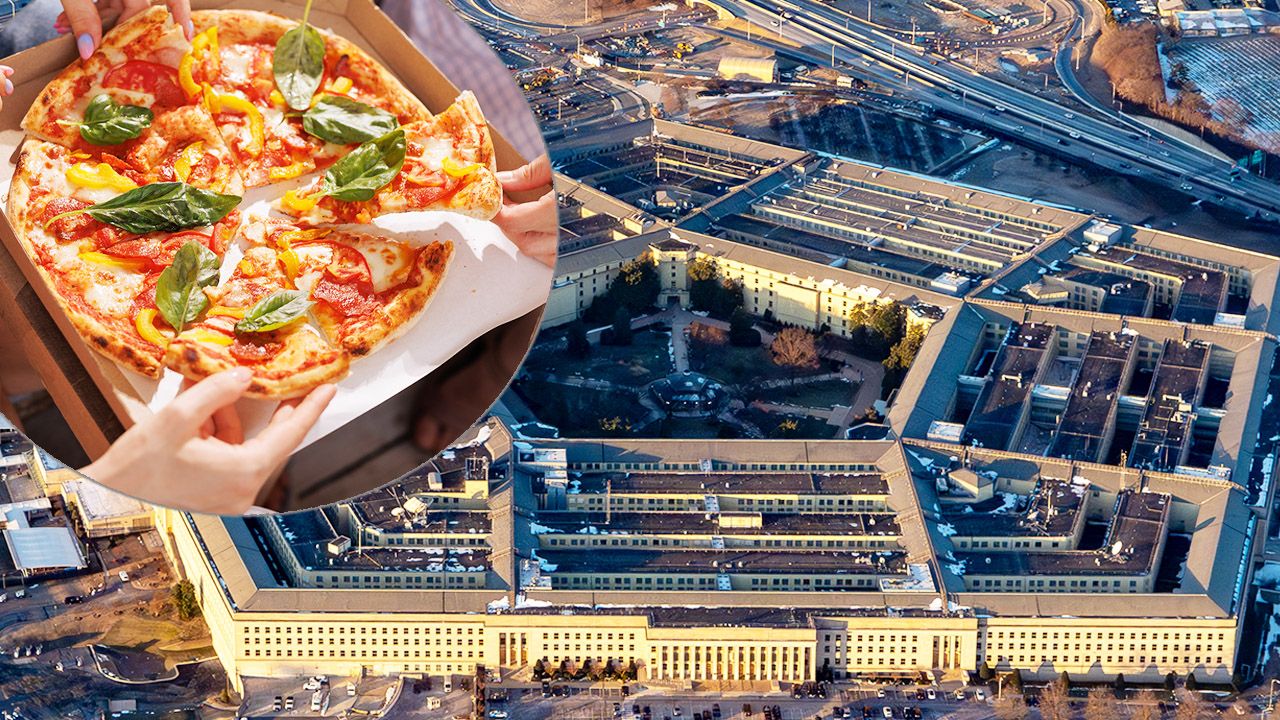
Chamberlains of London – Pentagon became the center of intense online discussions after reports emerged of an unusual surge in pizza orders near the military headquarters. The incident occurred on the night of June 12, 2025, around 7 p.m. local time in Arlington, Virginia. A popular account on X, formerly known as Twitter, named PenPizzaReport shared screenshots from four restaurants showing a spike in customer activity. These restaurants were We The Pizza, Domino’s Pizza, District Pizza Palace, and Extreme Pizza. The sharp rise in popular time charts, allegedly based on search engine analytics, triggered speculation that something significant was underway. The timing of this activity coincided with reports that Israeli forces had launched airstrikes on Iranian nuclear and missile facilities. For many online observers, the pattern felt familiar and echoed previous moments that preceded major military operations.
The Pentagon pizza theory is not entirely new. It has been part of online military chatter for years, often resurfacing during periods of heightened geopolitical tension. According to the theory, spikes in local pizza orders are seen as indirect signals of operational activity inside the Pentagon. The logic behind it is simple. When staff members work late into the night during critical events, food orders reportedly surge to accommodate extended hours. Some OSINT analysts claim that similar spikes were observed before the Iraq War and drone strikes in Syria. Although this narrative has never been officially confirmed, many people online treat the data as a soft indicator of military readiness. The latest pizza surge has once again brought this urban legend to the forefront, blending speculation, timing, and global conflict into one highly viral topic.
“Read about: Sweet Surprise! Here’s Where to Score Free Treats on National Dessert Day”
When asked to comment on the sudden spike in pizza orders, the Department of Defense gave a short response stating that no comments would be issued regarding such online reports. Pentagon spokespeople emphasized that the viral posts did not reflect the actual situation. According to the official explanation, the Pentagon has its own food facilities capable of meeting the needs of its personnel during extended operational hours. This means there is no strict reliance on outside restaurants for food supply. Officials highlighted that the link between pizza orders and military activity is unfounded and based purely on coincidence. However, the lack of detailed clarification has not stopped online users from dissecting every piece of available data, adding more fuel to the ongoing theory.
“Read more: Hamas Executions Shock the World Just Hours After Historic Peace Treaty with Israel”
Many internet users and analysts noticed the pizza surge timeline mirrored Middle East military escalations. At that exact moment, restaurants near the Pentagon recorded increased orders. Reports then surfaced that Israel launched coordinated airstrikes on Iranian nuclear and missile sites. The timing drew immediate comparisons to previous incidents with similar observed patterns. Observers mentioned earlier years when pizza spikes appeared before major overseas military operations. Although the link is circumstantial, the repeated alignment makes the theory hard to ignore. Analysts warn that relying too much on these signals may create misinformation. They also note that such patterns can easily capture global attention during tense geopolitical times.
The Pentagon pizza theory remains popular because it blends mystery, data patterns, and real-world conflict. Unlike official statements, food order data is accessible, visible, and easily shared across social media platforms. In a world where digital breadcrumbs often shape public perception, even mundane patterns can become perceived indicators of major events. The surge on June 12 has reignited debates among analysts, journalists, and casual observers who are trying to determine if the data is meaningful or coincidental. Whether real or not, this theory taps into a broader cultural fascination with hidden signals and shadow operations. Its persistence shows how narratives can gain traction in uncertain times, especially when global tensions like the Israel and Iran conflict intensify.
This article is sourced from cnbcindonesia and for more details you can read at chamberlainsoflondon
Writer: Sarah Azhari
Editor: Anisa